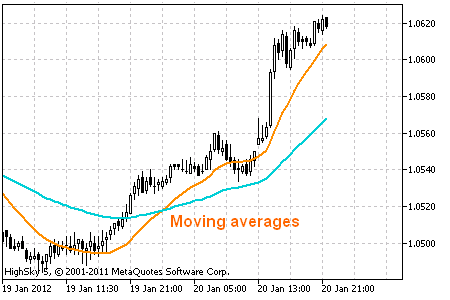The Most Popular Technical Indicators
Post on: 11 Сентябрь, 2015 No Comment

Last month our research team came across a short article titled “What Are The Most Popular Technical Indicators Worldwide? ” No one on the team was surprised to see that the Relative Strength Index (RSI) was far and away the most-used indicator other than a simple moving average. We’ve been publishing strategies for years that rely on J. Welles Wilder’s RSI calculations, although we tend to favor shorter lookback periods of two to five days rather than the more standard 14-day lookback. These strategies have stood the test of time, maintaining an edge through a variety of market conditions.
Last year we developed a new indicator called ConnorsRSI . which we consider to be the next generation of momentum oscillators. Our free Guidebook includes detailed information on the indicator itself, as well as a simple but effective trading strategy based on ConnorsRSI. We’ve also been revising many of our RSI-based strategies to use ConnorsRSI instead, and typically our testing has shown significantly improved historical results.
Do you want to learn a high probability trading strategy for ETFs based around the ConnorsRSI momentum oscillator? Click here to download your copy of ETF Scale-In Trading .
One of the signs that ConnorsRSI is entering the mainstream is that a number of online brokers have shown interest in adding the ConnorsRSI indicator to their trading platforms. Our assumption is that once a few of the big players include the indicator, many others will follow along.
As we’ve rolled out ConnorsRSI over the past several months, we’ve provided custom scripts for several platforms to allow traders to calculate and plot ConnorsRSI on their own. As you might guess, this has generated a number of questions. Some common ones include:
- How is ConnorsRSI different than RSI(2)?
Both our testing and day-to-day experience has shown that ConnorsRSI does a better job of pinpointing price reversals. Consider the case of Time Warner Cable (TWC ). The RSI(2) value for TWC climbed above 95 on March 11th, and stayed between 95 and 100 through March 20th. In comparison, the ConnorsRSI value didn’t close above 95 until March 20th. Thirty minutes before the market close on March 21st, the price of TWC has dropped by over 1.7%. Clearly ConnorsRSI would have been the superior indicator for timing your entry to a short trade or for buying put options. Edwards Life Sciences (EW ) recently displayed similar behavior, but while experiencing an oversold condition. The RSI(2) value slid under 5 on March 14th, and stayed there until the 3% price bounce on March 20th. Meanwhile, ConnorsRSI formed a more obvious bottom on March 19th, closing with a value below 2. Why don’t my ConnorsRSI values match the ones on the Trading Markets website?
There are a couple of reasons this may happen. First, keep in mind that the Trading Markets Screener shows values calculated from yesterday’s closing price, while the Analytics page shows ConnorsRSI values in near real-time (you can see the time stamp next to the ticker symbol near the top of the page). Make sure you’re comparing apples to apples.Different price data will obviously result in different ConnorsRSI values as well. We use data that has been adjusted for both splits and dividends. If your data source has been adjusted for splits only, then your ConnorsRSI values will not match ours. You can always plot the 2-period RSI on your platform and compare that to either the historical or real-time value on the Trading Markets web site. If the RSI(2) values match, then your price data probably matches ours.
You can find more trading opportunities throughout the trading day if you use live technical indicators with the TradingMarkets Live Screener click here to learn how.
- Why do I not always see a ConnorsRSI value in my environment?
Recall that the third component of ConnorsRSI compares today’s price change to the price changes for the previous N bars. If you’re using the default settings of ConnorsRSI(3,2,100), then N is 100. If you have less than 100 bars of price data available, then you can’t calculate the ConnorsRSI(3,2,100) value.We developed and optimized ConnorsRSI with the intention that it would be used on daily price bars, and so far we have done little testing with other timeframes. 100 bars of daily data is about 5 months of price history. However, let’s say that you apply the ConnorsRSI calculation to weekly bars; that means you’d need almost two years of price history before you’d be able to calculate ConnorsRSI(3,2,100). With monthly data, you’d need over 8 years worth of data!
We encourage you to continue experimenting with new and creative ways to use ConnorsRSI, and to contact us if you have questions. Perhaps in a few years you’ll see a “Most Popular Indicators” article that includes ConnorsRSI!














